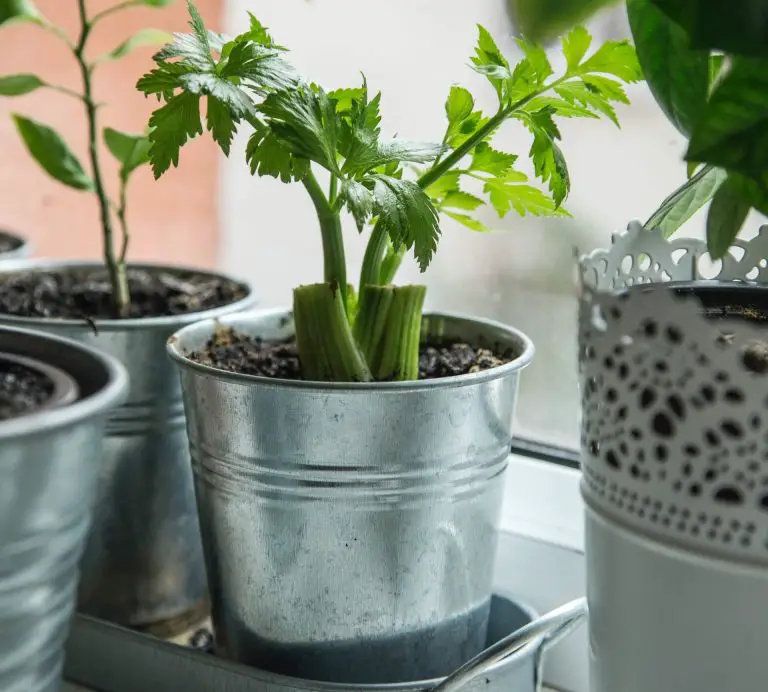15 Companion Plants For Rosemary (And 5 To Avoid)
Are you thinking of growing rosemary and want to know what are the best companion plants for rosemary? Well, let me tell you! Rosemary is an evergreen herb that belongs to the mint family.
Its aromatic feature makes it a great herb to enhance the flavor of our cooking especially when it’s a good old roast lamb or chicken so no doubt, this will be a great addition to your garden!
However, in order for rosemary to thrive, it’s important to consider what are some of its best companion plants and what ones to avoid. Scroll down below to find out what they are!
- 15 Good companion plants for rosemary:
- Lavender
- Alyssum
- Marigolds
- Thyme
- Chives
- Sage
- Oregano
- Marjoram
- Beans
- Carrots
- Parsnips
- Brassicas
- Cauliflower
- Onions
- Strawberries
- 5 companion plants for rosemary to avoid
- Mint
- Basil
- Tomatoes
- Cucumber
- Pumpkins
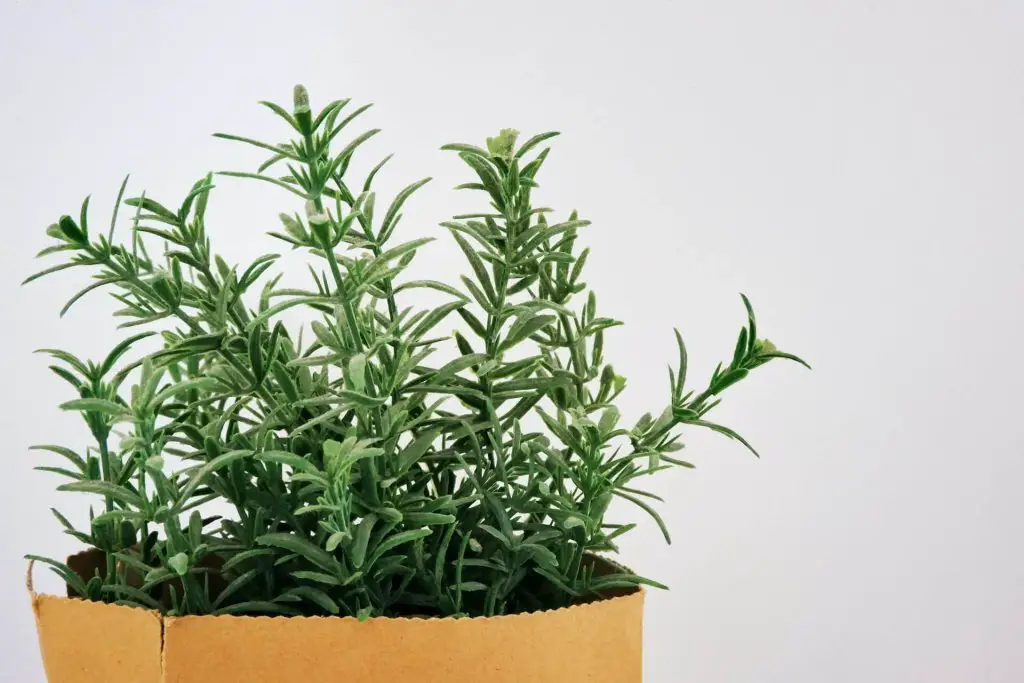
Affiliate Link Disclosure
The links on this page may be affiliate links, from which I earn a small commission if you click on them, AT NO EXTRA COST to you. Hope you find the information here useful. Thanks!
Related Posts
- How To Harvest Rosemary [The RIGHT Way!]
- When To Pick Carrots [+ Harvesting Tips!]
- 35 Companion Plants For Chard: Your Complete Guide For 2023!
What Are Companion Planting And Its Benefits
Companion planting is pairing two or more specific types of plants for each other’s mutual benefit. The benefits of companion planting are that it repels pests, attracts pollinators, improves soil nutrients, and encourages a better growth rate.
Companion Planting Chart For Rosemary
Before we dive into the details, here’s a summary table of companion plants for rosemary:
| Plant | Good companion plants | Bad companion plants |
| Rosemary | 1. Lavender 2. Alyssum 3. Marigolds 4. Thyme 5. Chives 6. Sage 7. Oregano 8. Marjoram 9. Beans 10. Carrots 11. Parsnips 12. Brassicas 13. Cauliflower 14. Onions 15. Strawberries | 1. Mint 2. Basil 3. Tomatoes 4. Cucumber 5. Pumpkins |
15 Good Companion Plants For Rosemary
Now that we’ve distinguished good and bad companion plants for rosemary, let’s understand why these plants make for good companions:
| Reasons for being a good companion plant | Plant |
| Attracts pollinators | Lavender, Alyssum, Thyme, Chives, Marjoram |
| Repel pests or insects | Marigolds, Thyme, Chives, Sage, Carrots, Parsnips, Onions |
| Improve growth rate | Marjoram |
| Good ground cover | Oregano, Brassicas |
| Improve the soil’s nutrients | Beans, Strawberries |
| Enhance the plant’s flavor | Strawberries |
Plants that share similar care requirements make for good companion plants which is why planting rosemary and lavender together will coexist well.

These plants come from Mediterranean climates, meaning rosemary and lavender planted together will need full sun and minimal water.
When planted together, it can attract pollinators that move pollen between flowers and subsequently help plant reproduction.
However, one thing to consider when companion planting for rosemary and lavender is the weather.
Unlike lavender, rosemary cannot tolerate cold temperatures so if you live in colder climate countries or experience seasonal weather, you should consider growing them in containers that can be moved indoors.
This also means that you would need to consider another companion plant for lavender during the Winter season.

This is a flowering plant that is just as pretty as Lavender. What makes Alyssum a good companion plant for Rosemary is not only can it beautify your garden but it also attracts pollinators.
Meanwhile, Rosemary releases a smell that can deter pests away making it equally beneficial for Alyssum.
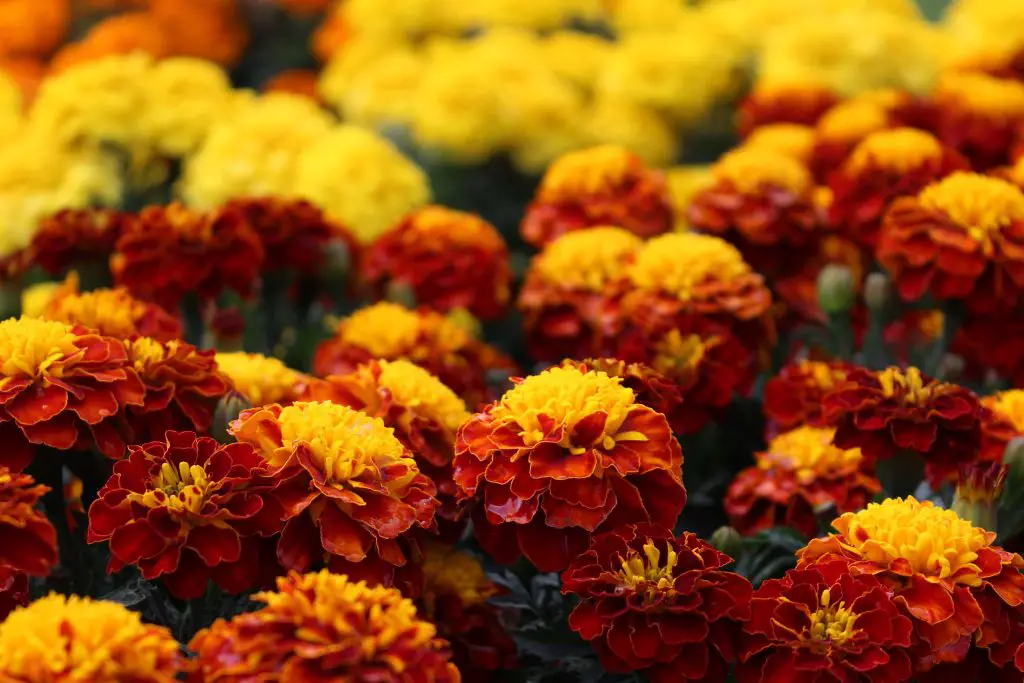
While they make look bright and cheerful, what makes Marigolds one of the best companion plants for rosemary is that they can deter insects. They would be a great addition to your vegetable garden and planted in between your Rosemary.
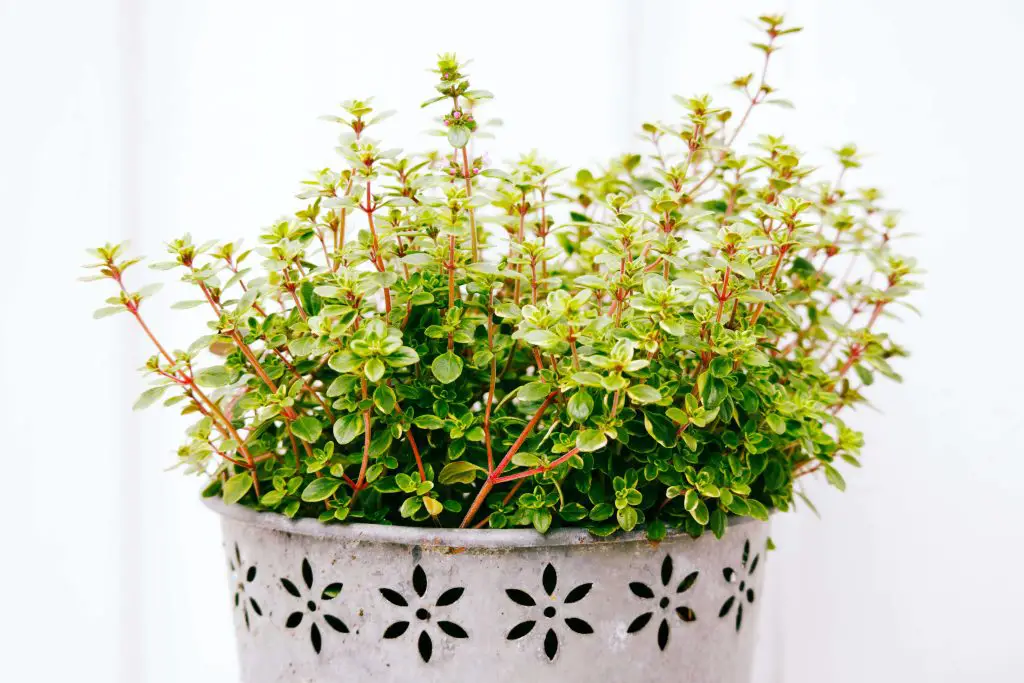
One of the best rosemary companion herbs is thyme. It shares the same growing conditions as rosemary which means it’s a convenient plant to add to your garden.
Thyme can form tiny lavender flowers which attract bees and can deter cabbage worms so the thyme and rosemary plant together can benefit not just each other but other plants in your garden.
However, it’s important to remember that rosemary can grow up to 6 feet whereas thyme can only grow up to 12 inches so ensure there is sufficient space between the two for them to grow well.

Provided they get full sun, chives have a long life and need only be planted once to reap their benefits. They make good companion plants for rosemary due to their ability to repel insects, specifically aphids, and attract pollinators.
They also make great companion plants if you have roses in your garden for they are known to ward off beetles which are a nemesis to roses and enhance the flowers’ growth.
Besides that, chives are a flowering plant that grows purple flowers, making your garden look pretty!

Sage and rosemary have the same soil requirement (they both thrive in well-drained soil) which makes them both compatible to grow together and subsequently great companion plants.
Whether they are interplanted or in pots, sage will help to keep pests away while rosemary can improve the health of sage and enhance its flavor.
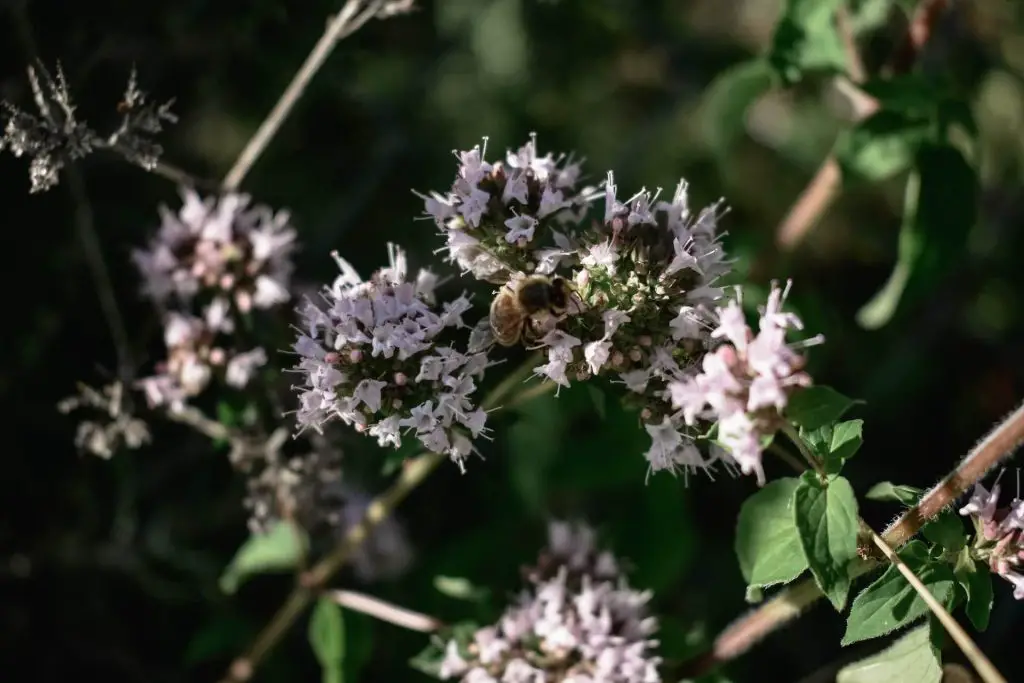
Oregano makes a great companion plant due to it having similar growth requirements as rosemary.
Oregano spreads low across the ground and acts like a blanket over the soil protecting it from the sun whereas rosemary will grow taller than oregano. This means they will not need to compete for space.
With that said, you can consider growing another plant that prefers cooler temperatures i.e. a plant that is shorter than oregano and doesn’t require much sunlight.

Marjoram is a culinary herb that is said to be a good all-purpose companion plant because it can get along with other plants and attract pollinators.
Specifically, what makes it one of the best companion herbs for rosemary is that it releases specific chemicals that promote faster growth and better taste in the plants around them.

Beans are one of the best companion plants for rosemary because it improves the soil’s nutrients by releasing nitrogen back into the soil. The nitrogen will subsequently help improve the health of the plants including rosemary.
Meanwhile, rosemary can help the growth of the beans by releasing a scent that can deter beetles from eating the beans’ leaves which are vital in the photosynthesis of the plants. Clearly, beans make a great rosemary companion and vice versa.
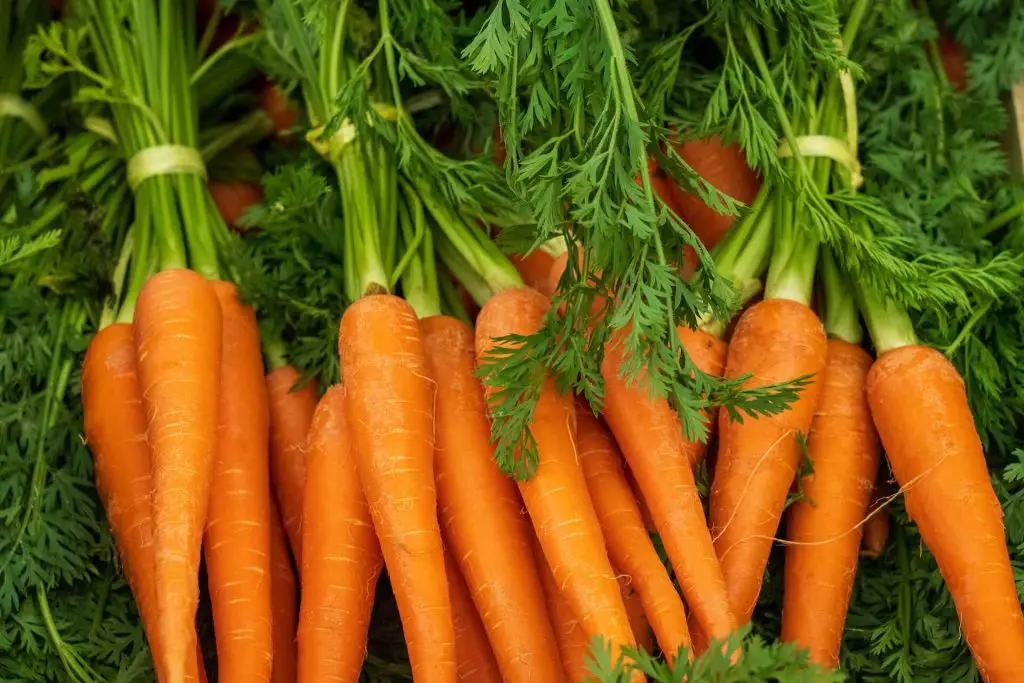
Rosemary and carrots won’t compete for nutrients given their different growth requirements but rosemary makes a great companion plant for carrots as its scent can mask the smell of carrots from carrot flies.
These pests are notorious for laying eggs that produce maggots that feed on the carrot roots’ outer layers.
Alternatively, you can sprinkle rosemary over the carrots if you cannot grow them next to each other. Doing so will ensure the carrots can grow free from pests.
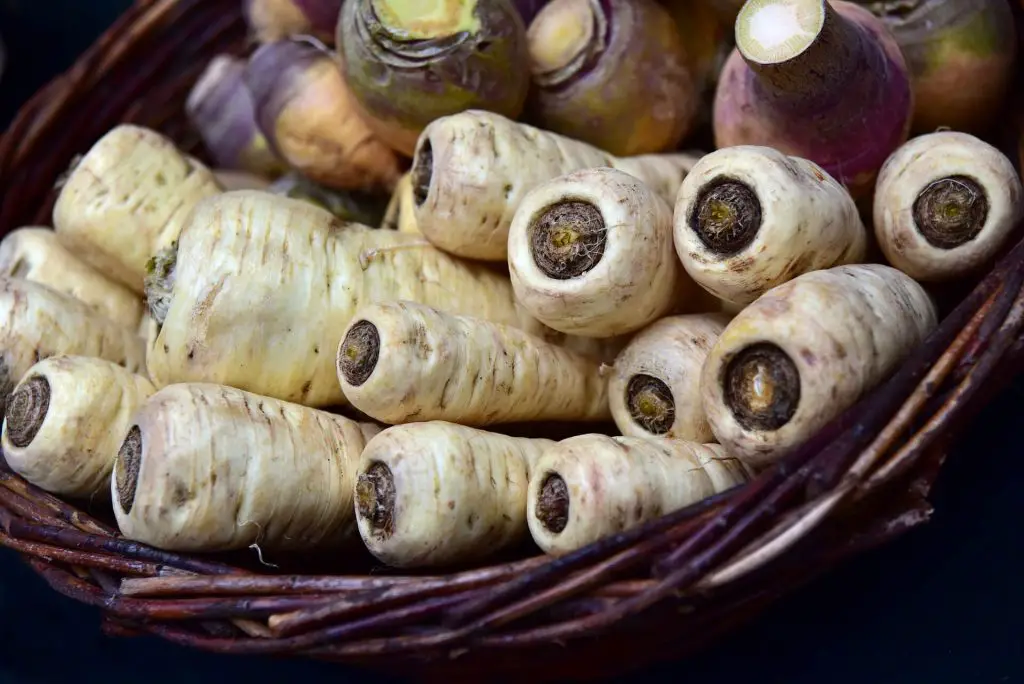
Similar to carrots, parsnips also attract flies and would need rosemary to keep the flies away using its powerful scent making it one of the best companion plants for rosemary.

Brassicas is used to describe a genus of 37 species of flowering plants in the mustard family. Examples of plants under this category include but are not limited to broccoli, brown mustard, brussel sprouts, cabbage, cauliflower, kale, and turnip.
Brassicas generally are known for providing great soil coverage because they’re leafy and grow rapidly resulting in the soil receiving plenty of shade which can assist in preventing the growth of weeds.
Meanwhile, rosemary can release a strong scent that can mask the smell of brassicas and keep pests like cabbage moths from laying their eggs and producing caterpillars that can feed on your cabbage patch.
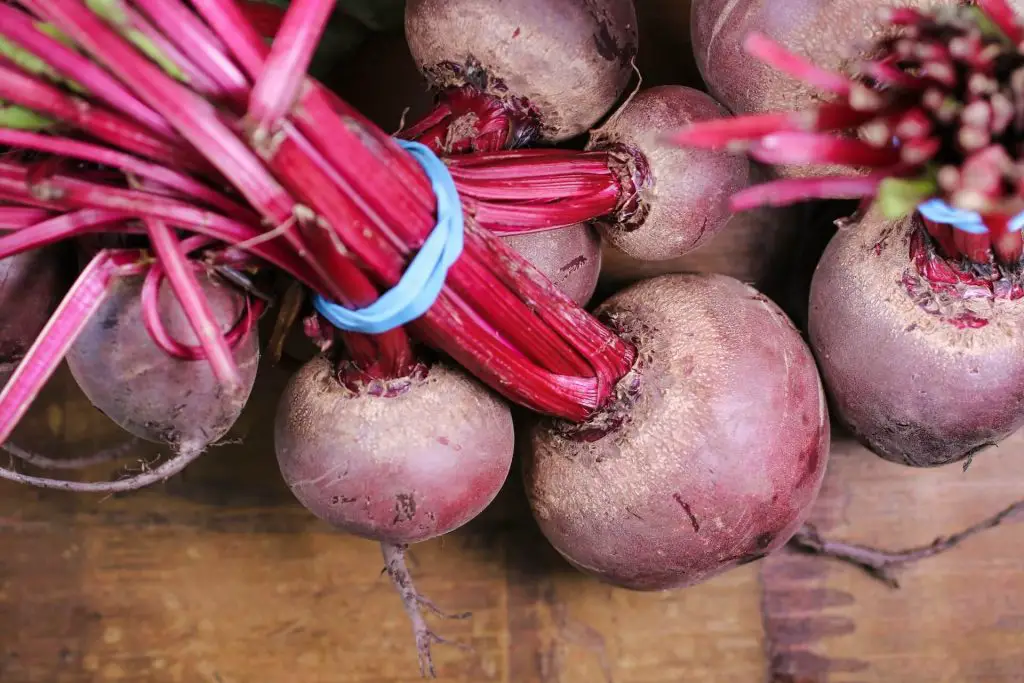
Beetroot is a vegetable that has gained popularity recently for its health benefits. Not only will growing them add a splash of color to your meals, but also they are an easy vegetable to grow.
It shares the same growth requirements as rosemary making it a convenient companion plant.
The strong aroma that’s released from rosemary can deter beet-eating pests away from them.
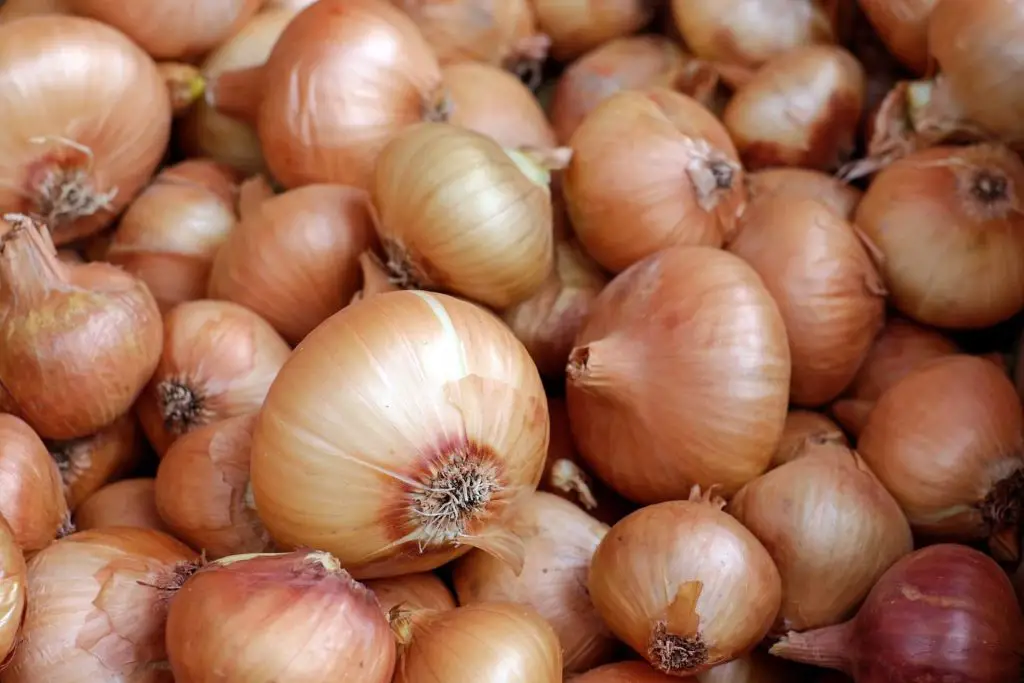
There’s no denying that onions are notorious for their strong scent which is why they make good companion plants for rosemary. This is because the strong smell is able to keep pests away from rosemary and allow it to grow well.

What makes strawberries an excellent companion plant is they add nutrients back into the soil for the benefit of the rosemary’s growth. They also tend to react positively to their companion plants and this can enhance their flavor.
Meanwhile, rosemary can release a scent that can keep strawberry pests away making it a beneficial relationship for both plants.
5 Companion Plants For Rosemary To Avoid
Now that we’ve identified what to plant with rosemary, let’s take a look at what not to plant with rosemary.
Check out the table below and see the five bad companion plants for rosemary to avoid before diving into the details!
| Plant | Reasons for being a bad companion plant |
| Mint | Takes up space |
| Mint, Basil, Tomatoes, Cucumber | Consumes a lot of water compared to rosemary |
| Tomatoes | Absorbs more nutrients |
| Pumpkins | Prone to mildew growth |
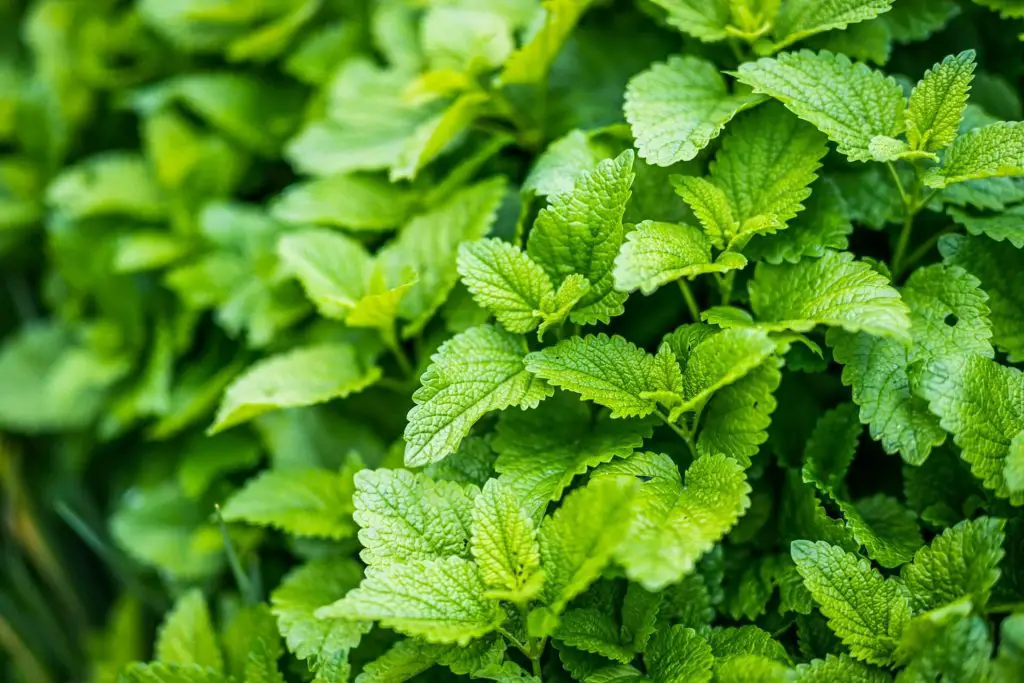
Often, aromatic herbs can be planted together. However, mint is considered a bad companion plant for rosemary. This is because mint and rosemary will compete for the same resources specifically space.
Mint can grow sprawlingly in your garden whereas rosemary can grow up to four feet tall so they must be planted separately.
Also, mint would need damp soil whereas rosemary needs well-drained soil making it even more impossible for them to grow next to each other.

Basil is another herb that should be avoided. Now rosemary and basil planted together will not mutually benefit both plants. Basil requires more moisture and damp soil compared to rosemary.
Such soil conditions would not be favorable for rosemary which requires well-drained soil and minimal moisture so best to grow them separately.

Tomatoes and rosemary can thrive in similar conditions but, tomatoes require a significant amount of water compared to rosemary. The water required to maintain the tomatoes will come at the cost of your rosemary’s growth.
Also, it’s been said that rosemary may absorb nutrients in the soil that can deprive the tomatoes growth making the rosemary companion plant tomato not viable for your garden.

Cucumbers also fall under the category of what not to plant with rosemary as they consume a large amount of water compared to rosemary.
As a result of this, there might not be any water for the rosemary’s growth and this can overwhelm the rosemary.
Cucumbers also require a higher nitrogen level in their soil compared to rosemary which further proves that cucumbers are not good companion plants for rosemary.

Pumpkins are prone to mildew. This refers to a black, green, or whitish area caused by a fungus that grows on plants.
Planting mildew-prone plants like pumpkins next to rosemary will increase the risk of mildew growing on it and subsequently rot your rosemary. So it’s best to avoid pumpkins as a rosemary companion.
Related Posts
- 11 Best Companion Plants For Oregano & What To Avoid! [2023]
- 17 Companion Plants For Kale & What To Avoid!
- 15 Companion Plants For Asparagus To Help It THRIVE! [2023]
Quick Care Guide For Growing Rosemary
Before you go off and find the best companion plants for rosemary, here are a few tips on how to care for your growing rosemary!
- Thrives in warm and humid conditions specifically where there’s full sun and well-drained sandy or loamy soil with a pH level of 6 or 7.
- It should be receiving 6 to 8 hours of sunlight each day. For indoor growth, place your rosemary by a south-facing window and place grow lights next to it to provide supplementary light.
- A newly planted rosemary needs to be watered frequently for the first couple of weeks but beyond that, it only needs an average amount of moisture.
- Rosemary is drought tolerant so if planted on the ground, the soil shouldn’t be too soggy otherwise it can cause the plant to rot.
- Meanwhile, if your rosemary is grown in containers, be sure to only water them when the soil is just dry to the touch so that you avoid overwatering.
- If you live in a country with a cold climate or experience the winter season, it’s best to grow them in containers so they can be moved indoors as rosemary cannot withstand temperatures at -1C.
- The containers must have drainage holes to allow excess water to seep through so ideal containers would be terracotta pots.
- If you’d like to prune your rosemary bush, which is necessary to shape its growth after the plant is done flowering, ensure your pruning shears are sharp and clean so that your cuts aren’t ragged as this can make your plant vulnerable to bacteria.
- Not to mention, wear your gardening gloves when pruning your rosemary (self-care is just as important as plant care!)
- Aphids and spider mites are prone to infesting rosemary especially when grown indoors so have insecticidal soap on standby to ward them off.
FAQs On Companion Plants For Rosemary
What’s A Good Companion Plant For Rosemary?
Often people would ask what’s a good companion plant for rosemary and the answer usually is cabbage, broccoli, cauliflower, kale, Brussels sprouts, turnips, kohlrabi, rutabaga, and radishes. In summary, plants in the cabbage family make good companion plants for rosemary because the rosemary’s aroma can mask the scent of brassicas and keep the pests away.
What Should Not Be Planted Near Rosemary?
Mint should not be planted near rosemary as it can take up a lot of space in your garden. Rosemary can grow up to four feet tall so planting both these herbs together may result in them competing for space and subsequently preventing them from growing to their fullest potential.
Does Lavender Grow Well With Rosemary?
If you’re wondering, does lavender grow well with rosemary? The answer is both can be planted together as a pair of companion plants to benefit the rest of your garden. Also, Rosemary would be especially useful to plant if you want to expand your herb garden that already has lavender.
Rosemary is an excellent addition to your garden as its scent can enhance our cooking, and keep pests at bay. So choosing the best companion plant will contribute greatly to its growth.
Now companion planting for rosemary may seem daunting as you try to understand the different companion plants so take your time to read through this article.
Ask yourself, what do you need this companion plant to do? Will this companion plant compete with my rosemary plant for nutrients? Will this companion also benefit other plants in my garden? Are there existing plants in my garden that can be rosemary companions?
Once you’ve answered these questions, I’m sure you’ll be able to identify which is the best companion plant for your rosemary. All the best!
Related Posts








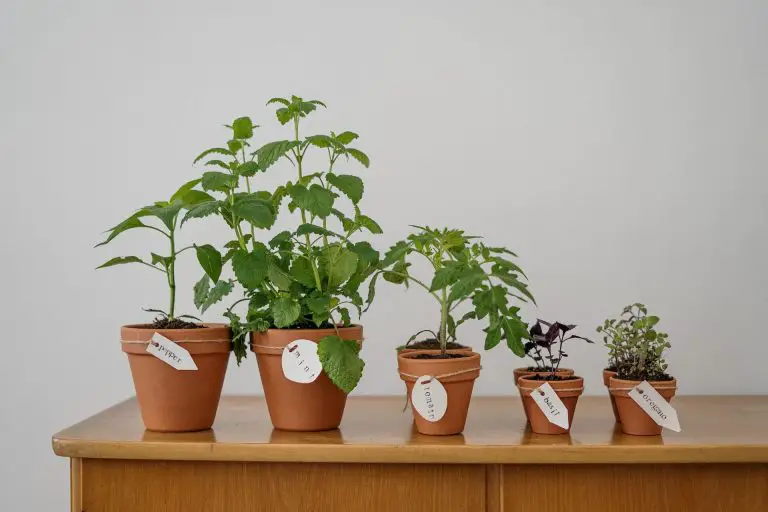

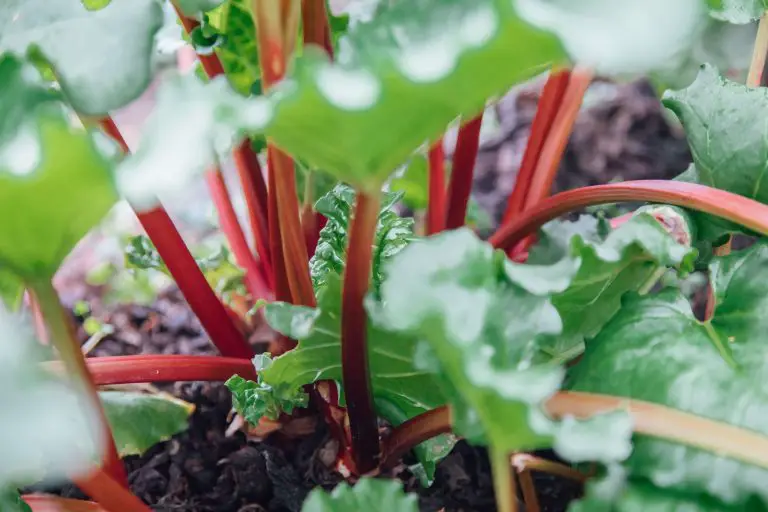
![11 Best Companion Plants For Oregano & What To Avoid! [2023]](https://aboveandbeyondgardening.com/wp-content/uploads/2022/11/companion-plants-for-oregano-768x512.jpg)
